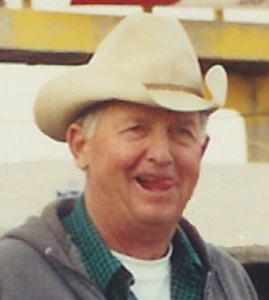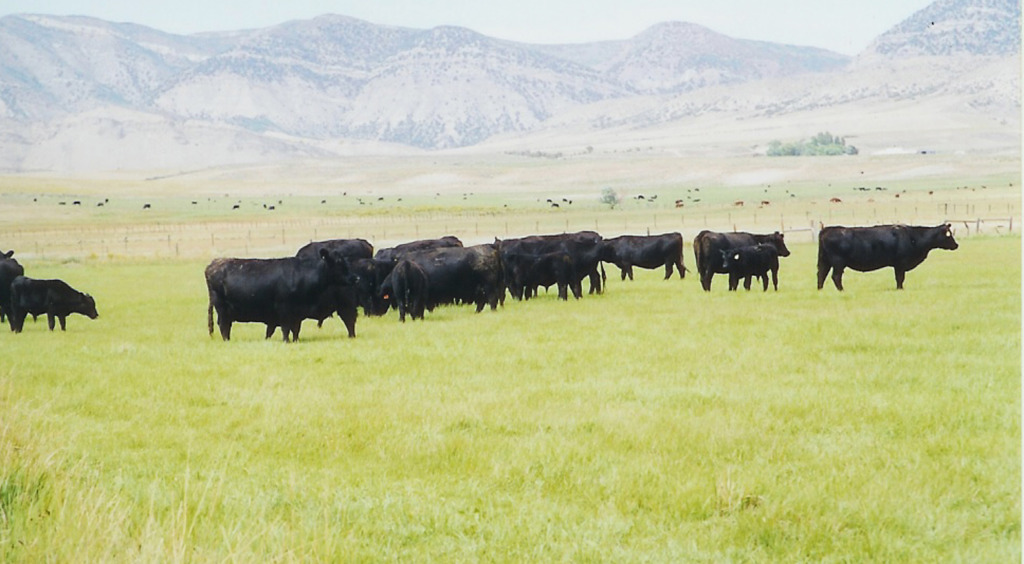
Bart Strang, 1928-2009
Our purebred cattle operation is based in the White River Valley, at an elevation of 6,500 feet. A five and half month feeding season (requiring 2.5 T of hay per mother cow) is the norm due to our snow and cold. To thrive in this environment, cattle must be hardy, efficient and easy fleshing. Additionally, our bulls have been PAP tested by Dr. Tim Holt, DVM, of Colorado State University, since 1992. For the last five years we’ve PAP tested all our yearling heifers as well.
Our Hereford program has been designed for such a climate for 62 years and genetically kept pace in order to produce the right kind for the commercial market. Since the early 1990’s our Angus herd has been a closed herd with the goal of developing an Angus line which can achieve the same results and work for our high altitude customers. The addition of Genomic EPDS to our Hereford cowherd, bulls of both breeds and replacement heifers enhances our ability to make greater genetic progress.
Strang Hereford and Angus cattle will thrive in a wide variety of environments. They have been successfully tested in Alberta, Canada; Alabama, Arizona, Arkansas, Florida, Idaho, Kansas, Montana, New Mexico, Mississippi, Kansas, Nebraska, Ohio, Oregon, Pennsylvania, Texas, Utah and Wyoming, as well as all parts of Colorado.
Ours is a family enterprise and continues to be today. We’ve been in the Hereford business for 62 years. and, 30 years ago, added a registered Black Angus program. Our four daughters, Mary, Ellen, Lisa and Sarah were pivotal to the ranch growing up, through their college years and when ever possible since. Today, Lisa and Tom Walsh and their family moved to their own place in ’21 after 25 years on the home ranch. They continue to help out regularly.
Program Goals
Our Herefords
Strang Herefords is enjoying its 61st year in business. Bart started with 10 registered heifers in 1961 from which he bred a productive and line-bred cow herd. As a true breeder of livestock, he kept pace with the breed’s genetic improvements. We reap the benefit of his life’s work today.
Our current gene pool is delivering rugged and high performing bulls from these foundation cows with smaller birth weights, increased maternal and carcass traits. We continue to emphasize fertility, structural correctness, muscle, good udders with small teats, milking and easy fleshing ability and eye pigment.
In 2019, we added Genomic EPDs. Genomics add DNA marker data to each animal’s EPDs. By doing so, the accuracy of EPD’s (which are estimates) for respective traits is greatly increased, The resulting EPDs can be used with confidence to select the traits a a breeding program needs – making greater genetic improvement in a a shorter period of time. By DNA testing and our bulls, and replacement heifers and scanning our bulls ofr carcass merits, we can confidently say that our Herefords are showing significant progress and are consistently high Marbling individuals.
Strang bulls can work in baldie, straight Hereford or terminal cross programs. Most of our bulls go on good commercial black cows because of baldie calves’ high bred vigor, baldies’ proven performance in the feed lot and their popularity as replacement females. The demand for the right kind of Hereford cattle continues to grow.
Our Black Angus
Strang Black Angus are bred for harsh winters and high altitudes. The goal is to produce three-dimensional, thick Angus suitable for such an environment. To this end, the herd haas been a closed one since the early ’90s. They’ve been line-bred with known low PAP (Pulmonary Arterial Pressure) genetics emphasizing fertility, maternal traits, easy fleshing ability, muscle and structural correctness. Today, the cowherd is stouter with increased capacity and extended longevity.
The addition of DNA testing our Angus bulls for Genomic EPDs and scanning them annually for carcass merits has provides valuable carcass and other data – all more tools with which to evaluate the bulls. Additionally, customers will enjoy significant hybrid vigor within the breed from these very line-bred genetics.
Pulmonary Arterial Pressure
Many of our bulls go into herds which graze at extremely high elevations and it’s mandatory we provide breeding stock with desirable Pulmonary Arterial Pressure. Our elevation is 6,500 ft. and Dr. Tim Holt, DVM, (an authority on PAP from Colorado State University) feels our elevation is very adequate to guarantee meaningful PAP scores for our customers. The yearlings are wintered around 5,000 feet, but we PAP them in Meeker when they return from the front range and have been acclimated to our altitude for a month. Our cattle have earned a reputation for consistent PAP scores through 30 years of testing and genetic selection based on PAP. We now PAP test all our heifers , as well, and are very pleased with the results. In time, this will make significant difference Angus PAP scores. Our Herefords continue to be very low PAP cattle. This year all of our 16-18 month old bulls and heifers had PAP scores ranging from 35 to 39.
Testing for PAP is not an exact science, but it is the only tool the industry has in trying to avoid brisket disease at high altitudes. An animal’s PAP is significantly affected by his/her genetics, environment and, to a lesser degree, nutrition. Dr. Holt knows our cattle well and guides all of our PAP decisions

